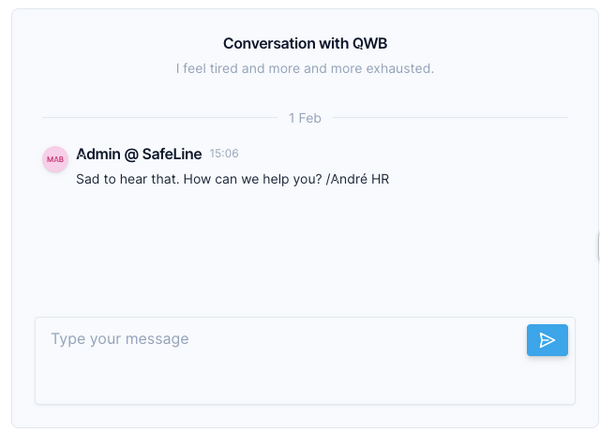Turning Feedback into Action: The Costly Mistake of Ignoring Employee Surveys

In the dynamic landscape of the modern workplace, employee feedback is a powerful compass, guiding organizations toward success and growth. Yet, the true value lies in collecting data through surveys and in the decisive actions taken based on those insights. This blog post delves into the critical importance of turning survey results into tangible changes. We share a cautionary and real tale of a manager who learned this lesson the hard way.
The Power of Employee Surveys: Unveiling the Blueprint for Success
Employee surveys serve as a mirror reflecting the inner workings of an organization. They provide a platform for your team to voice their opinions, concerns, and suggestions, presenting an invaluable opportunity to enhance workplace culture, boost morale, and improve overall productivity. However, the true magic happens when organizations take this feedback to heart and transform it into meaningful action.
This Manager Lost 20% of His Team: A Case Study
Consider the story of Alex Thompson, a once-respected manager who oversaw a high-performing team. His team members consistently rated their job satisfaction lower than the company average in quarterly surveys, highlighting concerns about communication, workload, and a lack of professional development opportunities.
Despite these red flags, Alex dismissed the survey results as mere grumblings, believing that the team would adapt or that the issues would resolve themselves over time. Unfortunately, this complacency proved costly. Within a few months, over 20% of his team members handed in their resignations, citing a lack of engagement, unaddressed concerns, and a sense of feeling undervalued.
The Price of Inaction: A Shrinking Team and Damaged Morale
The consequences of Alex's inaction were stark. Not only did his team suffer a significant loss in talent, but the remaining employees also experienced a decline in morale and engagement. Productivity plummeted, and the ripple effect was felt throughout the entire department.
The Road to Redemption: Taking Action on Survey Feedback
In contrast, organizations that actively listen and respond to survey feedback pave the way for success. In the subsequent sections of this blog post, we'll explore practical steps for transforming survey insights into concrete improvements, rebuilding trust, and creating a workplace culture that fosters growth and employee satisfaction.
Join us on this journey as we unravel the pivotal lessons learned from real-world scenarios, offering actionable advice to help you turn your employee survey results into catalysts for positive change. Don't let your organization make the same mistakes as Alex – discover the transformative power of listening to your team and taking deliberate steps to create a workplace where everyone thrives.
3 Actions How To Turn Feedback into Action
To start with, do these 3 things:
- Act fast
Feedback has an expiration date. Don't wait until the feedback is not relevant anymore or even worse, has turned into something more serious.
- Organize and structure the feedback
What can you do today? What needs a meeting? Organize and structure the feedback into prioritization based on what you can do today and what needs more people involved. And, make sure that your meetings are efficient, more on that here. Do bullet points and make sure to arrange needed meetings as fast as possible!
- Reply, share the feedback, and give responses
Many tools today, like Happy at Work, offer functionality where you can respond to comments. This is a great way to make your employees feel listened to and that their feedback matters. Also, share and discuss the feedback in groups.

Bonus: 3 Concrete Actions to Take Based on Common Feedback
Flexibility, professional development, and lack of communication. Do you recognize this? You are not alone. These feedback points are very common in organizations. Here are 3 concrete actions you can take to tackle them!
- Implementing Flexible Work Arrangements:
Action: Introduce flexible work schedules or remote work options based on employee preferences.
- According to a study by FlexJobs, 65% of employees believe they would be more productive working remotely.
- The State of Remote Work report by Buffer reveals that 98% of employees would like to work remotely at least some of the time for the rest of their careers.
- Investing in Professional Development:
Action: Develop a comprehensive professional development program to address skill gaps and foster career growth.
- A Gallup study found that 87% of millennials rate "professional or career growth and development opportunities" as important in a job.
- According to LinkedIn's Workplace Learning Report, 94% of employees would stay at a company longer if it invested in their career development.
- Enhancing Communication Channels:
Action: Strengthen communication channels through regular meetings, feedback forums, and transparent updates.
- In a survey conducted by Salesforce, 86% of employees and executives cite a lack of collaboration or ineffective communication for workplace failures.
- According to a Towers Watson study, companies with highly effective communicators had 47% higher total returns to shareholders over five years.
Conclusion
Don't let your organization follow the path of Alex Thompson. Embrace the transformative potential of employee feedback, turning survey results into catalysts for positive change. By actively listening, responding, and taking deliberate steps to address concerns, you can create an environment where both your team and your organization flourish.
To initiate this transformation, take these three essential actions:
- Act Fast: Feedback has an expiration date. Timely action prevents issues from escalating and demonstrates a commitment to addressing concerns promptly.
- Organize and Structure Feedback: Prioritize feedback based on immediate actions and those requiring broader collaboration. Efficiently organize and structure feedback to facilitate swift resolution.
- Reply, Share, and Respond: Utilize tools that allow you to respond directly to comments. This not only acknowledges the feedback but also makes employees feel heard. Additionally, share and discuss feedback within groups to foster open communication.
Stats and Facts: Source: Salesforce - "State of the Connected Customer," Towers Watson - "Communication ROI Study. Gallup - "How Millennials Want to Work and Live," LinkedIn - "Workplace Learning Report 2018". FlexJobs - "The 2019 State of Remote Work," Buffer - "The State of Remote Work 2020".
Share on: